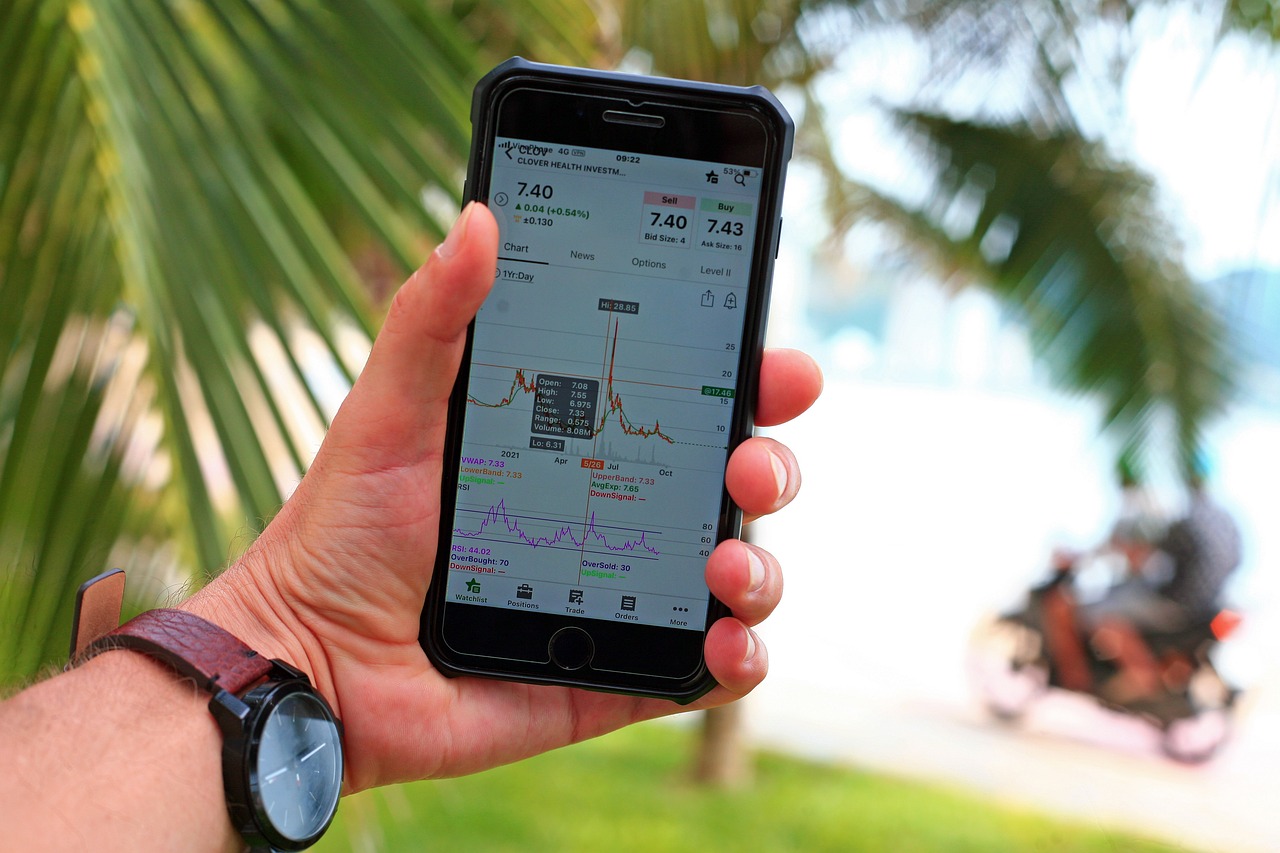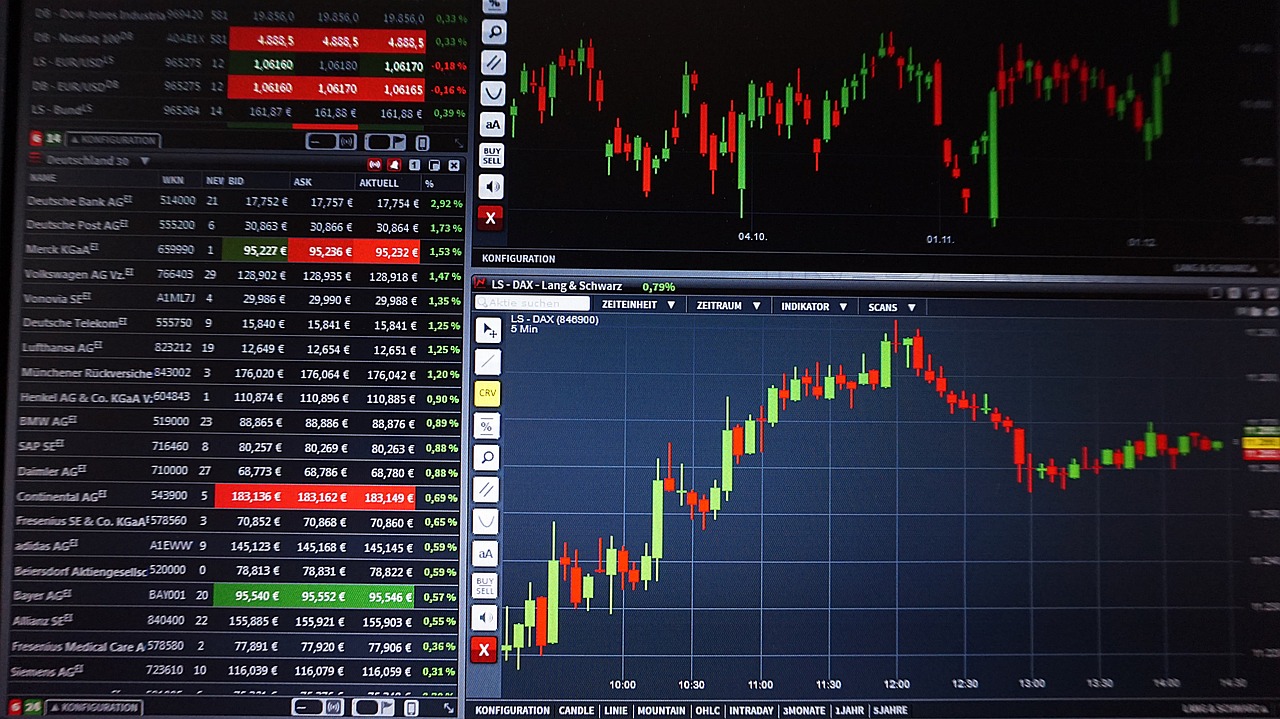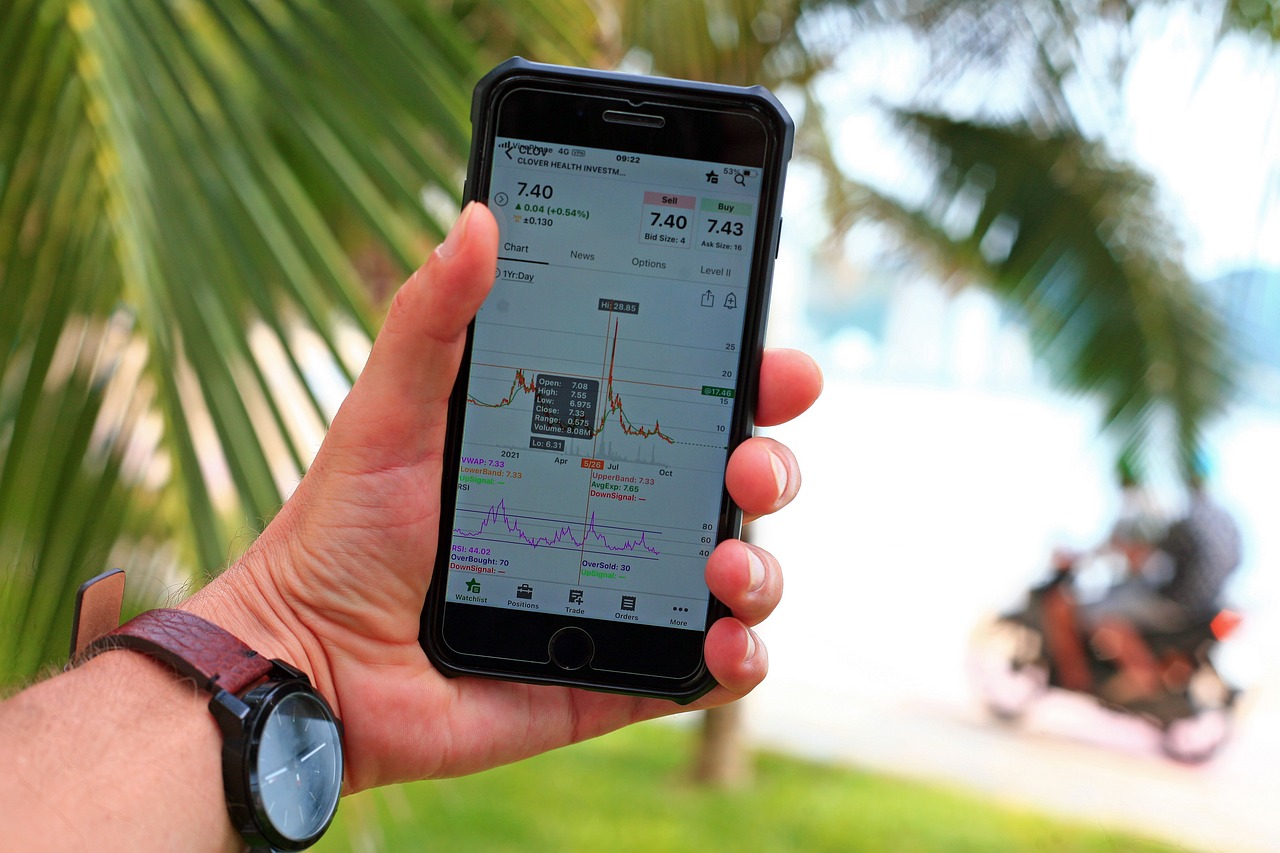Scalping Strategies - Quick Profits in the Crypto Market
In the ever-evolving landscape of cryptocurrency trading, the quest for quick profits has led many traders to adopt scalping strategies. But what exactly is scalping? Imagine being a sprinter in a race, darting in and out, seizing opportunities as they arise. Scalping is much like that; it involves making numerous trades throughout the day, each aiming for small profits. The beauty of this strategy lies in its potential for rapid returns, allowing traders to capitalize on minute price fluctuations in the volatile crypto market.
So why do traders opt for scalping? The answer is simple: the allure of quick gains and the thrill of fast-paced trading. Scalpers thrive on the adrenaline rush of making multiple trades within a single day, often holding positions for mere minutes. This strategy is particularly appealing in the crypto market, where prices can swing dramatically in a matter of seconds. However, it's not just about speed; successful scalping requires a deep understanding of market dynamics, the right tools, and a solid risk management plan.
In this article, we will delve into effective scalping strategies, exploring the techniques, tools, and best practices that can help traders maximize their profits. Whether you are a seasoned trader or a newbie looking to dip your toes into the world of crypto, understanding the fundamentals of scalping is crucial for navigating this fast-paced environment. So, buckle up as we embark on this journey to uncover the secrets of successful scalping!
Scalping is a trading strategy focused on making small profits from numerous trades throughout the day. This section explains the fundamentals of scalping, its objectives, and why traders opt for this approach in the crypto market.
Successful scalping requires specific tools and platforms. Here, we discuss the essential software, trading platforms, and technical indicators that can enhance a scalper's ability to make quick and informed decisions.
Selecting the right exchange is crucial for scalpers. This subsection evaluates the features of various exchanges, including fees, speed, and liquidity, that can affect a scalping strategy's effectiveness.
Low trading fees and high liquidity are vital for scalping success. This section discusses how these factors influence profitability and the importance of choosing exchanges that meet these criteria.
Access to real-time market data is essential for scalpers. Here, we explore tools and platforms that provide timely market information, helping traders make quick decisions based on current trends.
Effective risk management is a cornerstone of successful scalping. This section covers strategies to minimize losses and protect capital while maximizing profit potential in volatile crypto markets.
Creating a personalized scalping strategy involves understanding market conditions and personal trading styles. This section outlines steps to develop a tailored approach that aligns with individual goals and risk tolerance.
Backtesting is essential for refining scalping strategies. This subsection discusses methods for testing strategies against historical data to evaluate performance and make necessary adjustments for better results.
Market conditions can change rapidly, impacting scalping effectiveness. Here, we discuss how to adapt strategies to different market environments, ensuring continued profitability regardless of market volatility.
- What is scalping in cryptocurrency trading? Scalping is a trading strategy that involves making numerous trades throughout the day to profit from small price movements.
- What tools do I need for scalping? Essential tools for scalping include a reliable trading platform, real-time market data access, and technical analysis software.
- How can I manage risks while scalping? Effective risk management techniques include setting stop-loss orders, diversifying trades, and only risking a small percentage of your capital on each trade.
- Is scalping suitable for beginners? While scalping can be profitable, it requires a solid understanding of market dynamics and fast decision-making skills, making it more suitable for experienced traders.

Understanding Scalping
Scalping is like trying to catch tiny fish in a vast ocean—it's all about making quick, small profits from numerous trades throughout the day. Imagine being on a fishing boat, casting your net repeatedly, hoping to snag a few fish each time. In the world of cryptocurrency trading, scalpers employ a similar approach, executing a high volume of trades to capitalize on minute price movements. The primary objective is to accumulate small gains that can add up significantly over time, often taking advantage of the market's volatility.
So, why do traders opt for scalping in the crypto market? Well, the allure of rapid profits is hard to resist. Unlike traditional investing, where one might hold onto assets for months or years, scalping requires a different mindset—it's about being agile and quick on your feet. Scalpers thrive on the adrenaline rush of fast-paced trading, constantly analyzing charts, trends, and market news to make split-second decisions.
One of the key factors that makes scalping appealing is the ability to leverage technology. Today, traders have access to sophisticated tools and platforms that enable them to execute trades almost instantaneously. This speed is crucial because the crypto market operates 24/7, and prices can fluctuate wildly in a matter of seconds. To be successful, scalpers must not only understand the mechanics of trading but also be adept at using these tools to their advantage.
Moreover, scalping can be seen as a form of active trading, which contrasts sharply with the buy-and-hold strategy favored by many investors. While the latter relies on long-term trends and potential market growth, scalping focuses on short-term price movements. It's a bit like day trading but often involves holding positions for just a few minutes or even seconds. This strategy can be particularly effective in the crypto market, where price volatility can create numerous opportunities for profit.
However, it's important to note that scalping isn't for everyone. It requires a certain level of skill, discipline, and a strong understanding of market dynamics. Traders need to be comfortable with risk and possess the ability to make quick decisions under pressure. Additionally, having a well-defined scalping strategy, along with robust risk management techniques, is crucial for long-term success.
In summary, scalping is a dynamic and exciting trading strategy that appeals to those looking to maximize profits in the fast-paced world of cryptocurrency. By understanding the fundamentals of this approach, traders can position themselves to take advantage of the myriad opportunities that the crypto market has to offer.

Essential Tools for Scalping
When it comes to scalping in the fast-paced world of cryptocurrency trading, having the right tools at your disposal is absolutely crucial. Imagine trying to catch a fleeting butterfly with your bare hands; without the right net, you’re likely to come up empty. In the same way, effective scalping requires specific software, trading platforms, and technical indicators to help traders make quick and informed decisions. The tools you choose can significantly influence your profitability and overall success in this high-stakes environment.
One of the first tools to consider is a reliable trading platform. You want a platform that not only allows for swift transactions but also provides a user-friendly interface. A good trading platform acts as your command center, where you can monitor market movements and execute trades in real-time. Look for platforms that offer features like one-click trading, advanced charting tools, and customizable dashboards to suit your trading style.
Next, let’s talk about technical indicators. These are like your personal radar, giving you insights into market trends and price movements. Some of the most popular indicators among scalpers include:
- Moving Averages: Helps identify the direction of the trend.
- Relative Strength Index (RSI): Indicates whether an asset is overbought or oversold.
- Bollinger Bands: Useful for gauging market volatility.
Each of these indicators can provide valuable signals that guide your trading decisions. However, it's essential to remember that no single indicator should be used in isolation. Instead, consider combining multiple indicators to create a more comprehensive trading strategy.
Another vital component of your scalping toolkit is real-time data access. In the world of crypto, where prices can change in the blink of an eye, having access to the latest market data is non-negotiable. Many traders utilize dedicated data feeds or platforms that specialize in providing real-time market information. This allows you to stay ahead of the game and react quickly to market fluctuations.
Moreover, you should also invest in a good risk management tool. This could be as simple as a stop-loss order, which automatically sells your asset once it reaches a certain price, limiting your potential losses. A risk management tool is like your safety net; it ensures that you don’t fall too far if your trades don’t go as planned. Remember, in scalping, protecting your capital is just as important as making profits.
Finally, consider using a trading journal. Keeping track of your trades, strategies, and outcomes can provide invaluable insights over time. It’s easy to forget why you made a particular trade or what conditions influenced your decisions. A journal helps you reflect on your trading style, recognize patterns, and make necessary adjustments to improve your strategy.
In conclusion, the right tools for scalping can make all the difference in your trading journey. From choosing an efficient trading platform and utilizing technical indicators to ensuring real-time data access and implementing robust risk management strategies, each element plays a crucial role in your success. Equip yourself with these essential tools, and you’ll be well on your way to maximizing your profits in the exhilarating world of cryptocurrency trading.

Choosing the Right Exchange
When it comes to scalping in the cryptocurrency market, one of the most critical decisions you will make is selecting the right exchange. Think of it as choosing the perfect stage for your performance; the right environment can amplify your success, while the wrong one can lead to missed opportunities and unnecessary stress. The ideal exchange should not only meet your trading requirements but should also provide a seamless experience that allows you to execute trades swiftly and efficiently.
First and foremost, consider the trading fees. Scalping relies on making numerous small profits, so high fees can eat into your margins faster than you can say "blockchain." Look for exchanges that offer competitive fee structures. Some exchanges may charge a flat fee per trade, while others utilize a tiered system based on your trading volume. Understanding these structures can save you a significant amount of money in the long run.
Another vital aspect is liquidity. In the world of scalping, liquidity is your best friend. It ensures that you can enter and exit trades quickly without causing significant price shifts. High liquidity means there are plenty of buyers and sellers, allowing you to execute trades at your desired price. When evaluating exchanges, check their trading volumes and the number of active users. A bustling marketplace is essential for a scalper aiming for those quick wins.
Moreover, the speed of execution is crucial. In the fast-paced world of crypto trading, every second counts. A lagging platform can lead to missed opportunities, especially when the market is volatile. Look for exchanges that boast low latency and quick order execution times. Many traders even opt for exchanges that offer direct market access (DMA) to ensure they are always one step ahead.
Additionally, user experience cannot be overlooked. A user-friendly interface can make a world of difference when you’re trying to react quickly to market movements. Some exchanges offer advanced trading features and tools, such as charting options and technical indicators, which can help you make informed decisions on the fly. Before committing, take the time to explore the platform. Most exchanges offer demo accounts—use these to familiarize yourself with the layout and features.
Lastly, ensure that the exchange adheres to the necessary security protocols. The crypto space can be a bit of a Wild West, and you want your funds to be safe. Look for exchanges that offer two-factor authentication (2FA), cold storage for funds, and a solid track record when it comes to security breaches. A secure environment is paramount for peace of mind, allowing you to focus on your trading strategies without worrying about potential hacks.
In summary, choosing the right exchange is like finding the perfect partner for a dance; it requires compatibility, trust, and the ability to move smoothly together. By considering factors such as trading fees, liquidity, speed of execution, user experience, and security, you can set yourself up for success in the exhilarating world of crypto scalping.

Low Fees and High Liquidity
When it comes to scalping in the cryptocurrency market, two critical factors can make or break your trading success: low fees and high liquidity. Imagine trying to fill your car’s gas tank while standing in line at a fuel station that charges exorbitant prices. You’d likely feel frustrated and might even choose to drive to another station. The same principle applies in trading. If your chosen exchange has high trading fees, those costs can quickly eat into your profits, especially when you're making numerous trades throughout the day.
Low trading fees allow scalpers to execute multiple trades without worrying about losing a significant portion of their profits to transaction costs. For instance, if you make a profit of $10 on a trade but pay $5 in fees, you’re only left with $5. That’s not worth the effort, right? Therefore, when selecting an exchange, it’s essential to look for platforms that offer competitive fee structures. Many exchanges provide tiered fees based on trading volume, so the more you trade, the lower your fees can become. It’s a win-win situation!
Now, let’s talk about liquidity. In the trading world, liquidity refers to how quickly an asset can be bought or sold without affecting its price. High liquidity means there are plenty of buyers and sellers in the market, allowing you to enter and exit positions rapidly. Think of it as a bustling marketplace where you can easily find a buyer for your goods. In contrast, a low liquidity market resembles a deserted flea market, where you might struggle to sell your items at a fair price.
In the crypto space, liquidity can vary significantly between different assets and exchanges. For effective scalping, it’s crucial to choose cryptocurrencies that are actively traded. Popular coins like Bitcoin and Ethereum tend to have high liquidity, while lesser-known altcoins might not. Therefore, consider utilizing a liquidity table to compare various exchanges and their liquidity for specific cryptocurrencies:
| Exchange | Trading Pair | Liquidity Score | Trading Fees |
|---|---|---|---|
| Exchange A | BTC/USD | High | 0.1% |
| Exchange B | ETH/USD | Medium | 0.2% |
| Exchange C | LTC/BTC | Low | 0.3% |
As you can see from the table above, Exchange A offers both high liquidity and low fees for the BTC/USD trading pair, making it an ideal choice for scalpers. On the other hand, while Exchange C may have lower liquidity for LTC/BTC, its higher trading fees could deter frequent trading.
In conclusion, when embarking on your scalping journey, always prioritize exchanges that provide low fees and high liquidity. These factors not only enhance your potential for profit but also ensure that your trading experience is as smooth and efficient as possible. Remember, in the fast-paced world of cryptocurrency trading, every second counts, and every dollar saved on fees is a dollar earned!

Real-Time Data Access
In the fast-paced world of cryptocurrency trading, having access to real-time data is not just a luxury—it's a necessity. Imagine trying to play a game of chess where your opponent can see all your moves in real-time, while you’re stuck analyzing outdated information. That's how crucial it is for scalpers to tap into live market data. Without it, you're essentially flying blind, making trades based on yesterday's news.
Real-time data access enables traders to monitor market fluctuations, price changes, and trading volumes as they happen. This immediacy allows scalpers to make quick decisions, capitalize on fleeting opportunities, and react to sudden market shifts. For instance, a slight price dip might present a perfect buying opportunity, but if you're relying on delayed data, you might miss the chance entirely.
To ensure that you have the best tools at your disposal, consider the following types of platforms that offer real-time data:
- Trading Platforms: Many trading platforms provide integrated real-time data feeds. Look for platforms that offer customizable dashboards to keep track of multiple cryptocurrencies simultaneously.
- Market Data Aggregators: Websites and apps that compile data from various exchanges can be invaluable. They provide a comprehensive view of market trends and price movements across different platforms.
- Charting Tools: Advanced charting tools offer live charts with technical indicators that can help you analyze price action and make informed decisions on the fly.
Moreover, the speed at which you receive this data can significantly impact your trading success. Latency, or the delay between data transmission and reception, can be a killer in scalping. Therefore, it's essential to choose tools and platforms that prioritize low latency to ensure that you are always ahead of the curve.
In summary, real-time data access is the backbone of successful scalping strategies. By leveraging the right tools and platforms, you can make informed decisions quickly, ensuring that you never miss out on a profitable opportunity. As the saying goes, "Time is money," and in the world of crypto, this couldn't be more true. Don't let outdated information dictate your trading outcomes; embrace real-time data and watch your scalping strategy soar.

Risk Management Techniques
Risk management is not just a buzzword in the world of trading; it's the backbone of a successful scalping strategy. In the fast-paced realm of cryptocurrency, where prices can swing dramatically in the blink of an eye, having a solid risk management plan can mean the difference between a profitable day and a catastrophic loss. But what does effective risk management look like for scalpers? It involves a combination of strategies designed to protect your capital while allowing you to seize those fleeting opportunities that scalping presents.
First and foremost, one of the most critical aspects of risk management is setting a clear stop-loss order. This is essentially a safety net that automatically sells your assets if they drop below a certain price. By doing this, you can limit your losses on any given trade, ensuring that a single bad decision doesn't wipe out your entire account. Imagine you're on a rollercoaster; you wouldn't want to go down without a safety harness, right? The same principle applies here.
Moreover, understanding your risk-reward ratio is essential. This ratio helps you evaluate the potential profit of a trade against the potential loss. A common rule of thumb is to aim for a risk-reward ratio of at least 1:2. This means that for every dollar you risk, you should aim to make at least two. This way, even if you lose a few trades, your overall profitability remains intact. To visualize this, consider the following table:
| Trade | Risk ($) | Reward ($) | Outcome |
|---|---|---|---|
| 1 | 50 | 100 | Win |
| 2 | 50 | 100 | Win |
| 3 | 50 | 100 | Loss |
| 4 | 50 | 100 | Win |
| 5 | 50 | 100 | Loss |
In this example, even with two losses, the overall performance remains positive due to the favorable risk-reward ratio. But remember, it’s not just about numbers; it’s also about emotional control. The psychological aspect of trading can often be overlooked. It’s easy to get swept up in the excitement of a winning streak or the despair of a losing one. Maintaining a level head is crucial. Techniques such as mindfulness and trading journals can help you stay grounded and make rational decisions, even under pressure.
Another effective technique is to diversify your trades. Instead of putting all your eggs in one basket, consider spreading your investments across multiple assets. This way, if one trade goes south, others might still perform well, cushioning the blow. Think of it like a buffet; if one dish doesn’t suit your palate, there are plenty of other options to choose from.
Lastly, always keep an eye on your overall capital and never risk more than you can afford to lose. A good rule of thumb is to only risk a small percentage of your total capital on a single trade—typically around 1-2%. This approach ensures that even a series of unfortunate trades won’t put you out of the game. It’s about playing the long game, not just chasing quick wins.
In summary, the art of scalping in the crypto market can be thrilling, but it comes with its fair share of risks. By implementing solid risk management techniques, you can navigate the choppy waters of trading with confidence. Remember, it’s not just about making quick profits; it’s about protecting your capital and ensuring that you’re in the game for the long haul.
- What is scalping in cryptocurrency trading? Scalping is a trading strategy that involves making numerous trades throughout the day to profit from small price changes.
- How do I choose the right exchange for scalping? Look for exchanges with low fees, high liquidity, and fast execution speeds.
- What is a stop-loss order? A stop-loss order is a preset order to sell an asset when it reaches a certain price, helping to limit potential losses.
- How much of my capital should I risk on a single trade? It’s advisable to risk only 1-2% of your total capital on any single trade.
- Why is emotional control important in trading? Emotional control helps you make rational decisions and avoid impulsive trades during periods of high stress or excitement.

Developing a Scalping Strategy
Creating a personalized scalping strategy is like crafting a fine recipe; it requires the right ingredients and a sprinkle of creativity. Scalping in the cryptocurrency market is fast-paced and requires not just quick reflexes but also a well-thought-out plan. The first step in developing your scalping strategy is to thoroughly understand market conditions. Are you trading in a bullish, bearish, or sideways market? Each scenario requires a different approach. For instance, in a bullish market, you might focus on buying dips, while in a bearish market, you may want to consider shorting rallies.
Next, consider your personal trading style. Are you more comfortable taking risks, or do you prefer a conservative approach? This self-awareness will guide you in setting realistic goals and expectations. It’s crucial to align your strategy with your risk tolerance. For example, if you’re someone who can’t sleep at night worrying about your trades, then a more conservative scalping approach would be suitable.
Another important aspect is to define your entry and exit points clearly. This means knowing exactly when to buy and sell. A common method is to use technical indicators, such as moving averages or RSI (Relative Strength Index), to help identify these points. However, remember that no indicator is foolproof. It’s wise to combine multiple indicators to confirm your decisions.
Additionally, you should establish a set of rules for your trades. This could include:
- Setting a maximum loss per trade
- Defining your profit target
- Determining the number of trades you’ll make in a day
Having these rules in place acts as a safety net, helping you to avoid emotional decision-making in the heat of trading. Now, let’s talk about the importance of backtesting your strategy. Backtesting allows you to simulate your trading strategy using historical data to see how it would have performed in the past. This process not only helps you refine your strategy but also builds confidence in your approach. The more you test your strategy, the more you’ll understand its strengths and weaknesses.
After backtesting, it’s essential to be adaptable. The crypto market is notorious for its volatility, which means conditions can change rapidly. You must be willing to adjust your strategy to fit the current market environment. For example, if a sudden news event causes a price spike, your usual scalping strategy may need to be put on hold until the dust settles.
In summary, developing a scalping strategy is not just about executing trades; it’s about understanding the market, knowing yourself, and being prepared to adapt. By combining technical analysis, personal risk assessment, and a solid set of trading rules, you can create a scalping strategy that not only aims for quick profits but also protects your capital in the unpredictable world of cryptocurrency trading.
Q1: What is the best time frame for scalping in crypto?
A1: Most scalpers prefer shorter time frames like 1-minute to 5-minute charts, as they allow for quick trades and immediate feedback on market movements.
Q2: How much capital do I need to start scalping?
A2: While you can start with a small amount, having a larger capital base can provide more flexibility to absorb losses and take advantage of multiple trades.
Q3: Can I use automated trading bots for scalping?
A3: Yes, many traders use automated bots to execute their scalping strategies. However, it's essential to monitor their performance regularly to ensure they adapt to changing market conditions.

Backtesting Your Strategy
Backtesting is a crucial step for any scalper looking to refine their trading strategy. Imagine trying to navigate a maze without knowing the layout—backtesting helps you map out the twists and turns of the market before you dive in. By applying your scalping strategy to historical data, you can simulate trades and evaluate how your approach would have performed in various market conditions. This not only builds your confidence but also provides invaluable insights into the strengths and weaknesses of your strategy.
To effectively backtest your scalping strategy, you should consider the following steps:
- Choose the Right Data: Select relevant historical data that reflects the market conditions you plan to trade in. This includes price movements, volume, and volatility.
- Define Your Parameters: Clearly outline the rules of your scalping strategy, including entry and exit points, risk management rules, and the time frames you will be trading.
- Utilize Backtesting Software: Leverage specialized software or platforms that offer backtesting capabilities. These tools can automate the testing process and provide detailed reports on performance.
Once you've gathered your data and set your parameters, run the backtest and analyze the results. Look for key performance indicators such as the win/loss ratio, average profit per trade, and maximum drawdown. These metrics will help you gauge the effectiveness of your strategy and identify areas for improvement.
It's important to remember that past performance does not guarantee future results. The crypto market is notoriously volatile, and conditions can change rapidly. Therefore, while backtesting is a valuable tool, it should be complemented with ongoing monitoring and adjustment of your strategy. Always be prepared to adapt to new market dynamics and refine your approach as necessary.
In conclusion, backtesting your scalping strategy is like fine-tuning a musical instrument before a performance. It ensures that you're in tune with the market, ready to make quick, informed decisions that can lead to profitable trades. So, before you jump into the fast-paced world of crypto scalping, take the time to backtest and refine your strategy—your future profits may depend on it!
Here are some common questions traders ask about backtesting their scalping strategies:
- What is the best timeframe for backtesting? While it depends on your trading style, many scalpers prefer short timeframes, such as 1-minute or 5-minute charts, to closely analyze price movements.
- How much historical data should I use? Aim for at least six months of historical data to get a comprehensive view of market conditions and ensure your strategy is robust.
- Can I use backtesting for other trading strategies? Absolutely! Backtesting is a versatile tool that can be applied to any trading strategy, not just scalping.

Adjusting to Market Conditions
In the ever-changing landscape of the cryptocurrency market, the ability to adapt your scalping strategy to various market conditions is not just beneficial; it's essential. Just like a skilled surfer rides the waves, a successful scalper must be able to navigate through the highs and lows of market fluctuations. Understanding when to enter and exit trades can mean the difference between a profitable day and a significant loss.
Market conditions can be categorized into several types, each requiring a distinct approach. For instance, during a bull market, where prices are generally rising, traders might focus on quick buys and sells, capitalizing on upward momentum. Conversely, in a bear market, where prices are declining, scalpers may need to adopt a more cautious approach, potentially looking to short-sell or avoid trades altogether until conditions improve.
To illustrate this further, consider the following table that outlines different market conditions and the corresponding scalping strategies:
| Market Condition | Recommended Strategy |
|---|---|
| Bull Market | Focus on quick buys, capitalize on upward trends. |
| Bear Market | Consider short-selling, reduce trading frequency. |
| Sideways Market | Look for small fluctuations, trade within a range. |
| High Volatility | Be cautious, set tight stop-loss orders to manage risk. |
Another critical aspect to consider is the impact of news and events on market conditions. Major announcements, regulatory updates, or technological advancements can create sudden shifts in the market. For instance, if a popular cryptocurrency exchange experiences a security breach, prices may plummet, creating a volatile trading environment. Scalpers need to stay informed about such events and be ready to adjust their strategies accordingly.
Moreover, it's essential to utilize technical indicators that can help predict market movements. Indicators like the Moving Average Convergence Divergence (MACD) or Relative Strength Index (RSI) can provide valuable insights into whether the market is overbought or oversold, guiding your decision-making process. Integrating these tools into your strategy can enhance your ability to react swiftly to changing conditions.
In conclusion, adjusting to market conditions is a dynamic process that requires constant vigilance and flexibility. The most successful scalpers are those who can read the market like a book, predicting its next move and adjusting their strategies accordingly. So, whether you're riding the waves of a bull market or navigating the rough seas of a bear market, remember that adaptability is key to sustaining your profitability in the fast-paced world of cryptocurrency trading.
- What is scalping in cryptocurrency trading? Scalping is a trading strategy that focuses on making small profits from numerous trades throughout the day.
- How do I choose the right exchange for scalping? Look for exchanges with low fees, high liquidity, and fast execution times to enhance your scalping effectiveness.
- What tools are essential for scalping? Essential tools include trading platforms with real-time data, technical analysis software, and efficient risk management systems.
- How can I backtest my scalping strategy? You can backtest your strategy using historical market data to evaluate its performance and make necessary adjustments.
- How do I manage risk while scalping? Implementing stop-loss orders, diversifying trades, and setting profit targets can help manage risk effectively.
Frequently Asked Questions
- What is scalping in cryptocurrency trading?
Scalping is a trading strategy where traders aim to make small, quick profits from numerous trades throughout the day. Instead of holding onto assets for long periods, scalpers capitalize on minor price fluctuations, often executing dozens or even hundreds of trades in a single day.
- What tools do I need for effective scalping?
To be a successful scalper, you'll need a reliable trading platform that offers real-time data, low fees, and high liquidity. Essential tools include technical indicators like moving averages and RSI, as well as charting software to help analyze market trends quickly.
- How do I choose the right exchange for scalping?
When selecting an exchange for scalping, consider factors such as trading fees, liquidity, and execution speed. Look for exchanges that offer low fees to maximize your profits and ensure that trades can be executed quickly to take advantage of market movements.
- What are some risk management techniques for scalpers?
Effective risk management is crucial in scalping. Techniques include setting stop-loss orders to limit potential losses, diversifying your trades, and only risking a small percentage of your capital on each trade. This way, you can protect your capital while still aiming for quick profits.
- How can I develop my own scalping strategy?
To create a personalized scalping strategy, start by understanding your trading style and the market conditions. Analyze historical data to identify patterns and backtest your strategy to evaluate its effectiveness. Adjust your approach based on current market trends and your risk tolerance.
- Why is backtesting important for scalpers?
Backtesting allows traders to simulate their strategies against historical market data. This process helps identify strengths and weaknesses in your approach, enabling you to make necessary adjustments before risking real capital. It’s like practicing before the big game!
- How do I adapt my scalping strategy to changing market conditions?
Market conditions can change rapidly, so it’s essential to stay informed and flexible. Monitor market news and trends, and be ready to adjust your strategy accordingly. Whether the market is bullish or bearish, adapting quickly can help ensure continued profitability.



















